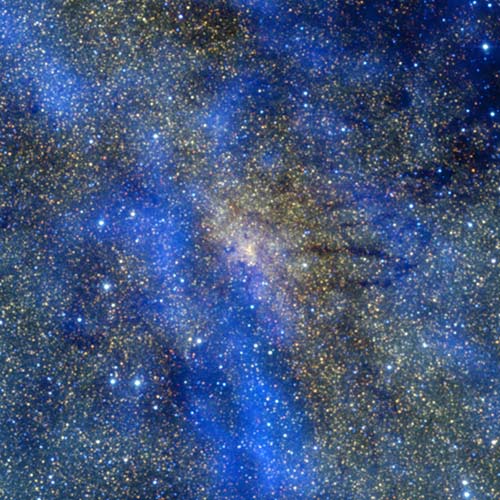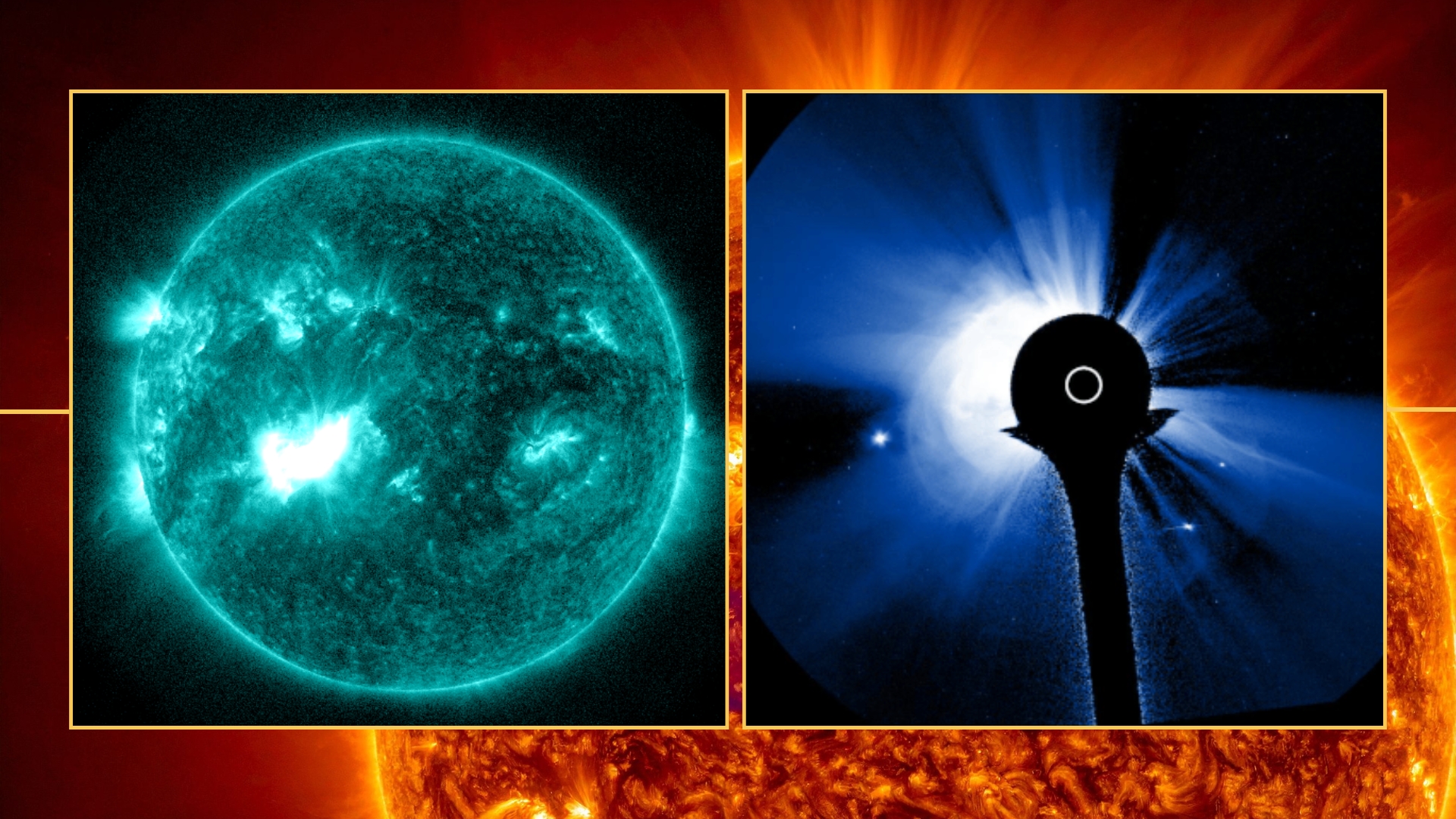Bursts Spotted at Milky Way's Black Hole

Outbursts from the black hole at the center of our Milky Way galaxy generate material that is stretched as it orbits near the gravitational behemoth.
New observations from two telescopes provide a better look at what's going on down there.
While black holes can't be seen, material swirling into one is superheated, giving off radiation that can be observed. While the Milky Way's black hole is not among the most active in the universe, it is prone to flare-ups.
A team of European and US astronomers used ESO's Very Large Telescope (VLT) and the Atacama Pathfinder Experiment (APEX) telescope, both in Chile, to study light from the black hole, called Sagittarius A*, at near-infrared wavelengths and the longer submillimeter wavelengths respectively.
This is the first time that astronomers have recorded an outburst with these telescopes simultaneously.
"Observations like this, over a range of wavelengths, are really the only way to understand what's going on close to the black hole," said Andreas Eckart of the University of Cologne, who led the team.
Sagittarius A* is about 26,000 light-years away. It is a supermassive black hole with a mass of about 4 million times that of the sun. Most, if not all, galaxies are thought to have a supermassive black hole in their centers.
Breaking space news, the latest updates on rocket launches, skywatching events and more!
"Sagittarius A* is unique, because it is the nearest of these monster black holes, lying within our own galaxy," said team member Frederick K. Baganoff of MIT. "Only for this one object can our current telescopes detect these relatively faint flares from material orbiting just outside the event horizon."
The emission from Sagittarius A* is thought to come from gas thrown off by stars, which then orbits and falls into the black hole.
The researchers detected violently variable infrared emission, with four major flares over a six-hour period. The submillimeter-wavelength results showed flares that began more than an hour after the infrared flares.
The researchers explain that this time delay is probably caused by the rapid expansion, at speeds of about 3.1 million mph (5 million kph), of the clouds of gas that are emitting the flares. This expansion causes changes in the character of the emission over time.
The material was moving at only 0.5 percent of the speed of light. To escape from the very strong gravity so close to the black hole, the gas would have to be traveling at half the speed of light — 100 times faster than detected — and so the researchers believe that the gas cannot be streaming out in a jet. Instead, they suspect that a blob of gas orbiting close to the black hole is being stretched out, like dough in a mixing bowl, and this is causing the expansion.

Space.com is the premier source of space exploration, innovation and astronomy news, chronicling (and celebrating) humanity's ongoing expansion across the final frontier. Originally founded in 1999, Space.com is, and always has been, the passion of writers and editors who are space fans and also trained journalists. Our current news team consists of Editor-in-Chief Tariq Malik; Editor Hanneke Weitering, Senior Space Writer Mike Wall; Senior Writer Meghan Bartels; Senior Writer Chelsea Gohd, Senior Writer Tereza Pultarova and Staff Writer Alexander Cox, focusing on e-commerce. Senior Producer Steve Spaleta oversees our space videos, with Diana Whitcroft as our Social Media Editor.
